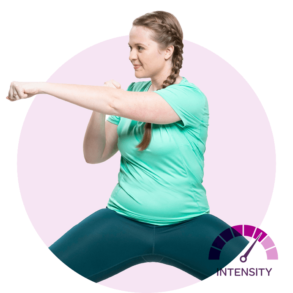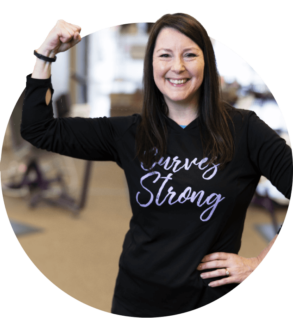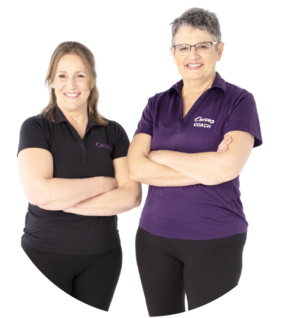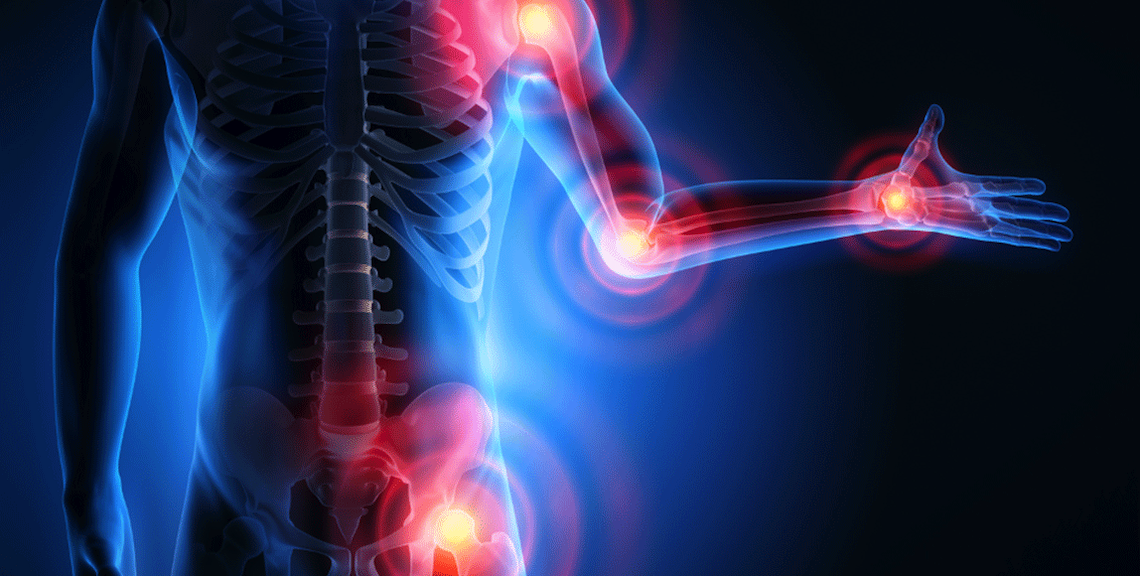What Is Inflammation and How to Manage It as You Age
As we get older, we get a few more wrinkles and aches and pains, and we also become more inflamed. Inflammation is common, and it can be indicative of greater health issues. Good news is, there are things you can do to keep inflammation under control, including engaging in a full body workout like the Curves Circuit and eating anti-inflammatory foods. Here’s an overview of inflammation—what causes it, what it does to your body, and what you can do to keep it at bay.1
What is Inflammation?
Inflammation is your body’s way of trying to heal injury or fight off invaders, like bacteria, viruses, or chemicals. When you encounter an injury or invader, your immune system sends out cells that stimulate an inflammatory response to try to trap any offenders and start the healing process. The result of this inflammation is pain, redness, swelling, or bruising. The problem is, inflammation can spread to other parts of your body as well, where it does more harm than good.
There are two types of inflammation—acute inflammation and chronic inflammation.
Acute inflammation is your body’s response to a sudden injury or invader, such as a paper cut on your finger. To heal your finger, your body sends inflammatory cells to the sight of the cut. Symptoms of acute inflammation include pain, swelling, redness, and heat.
Chronic inflammation is inflammation that continues past an initial injury or invader. Your body continues the inflammatory response long-term. Symptoms of chronic inflammation include joint pain, weight gain, skin rash, abdominal pain, fatigue, chest pain, fever, and mouth sores. 2
The Danger of Chronic Inflammation
When chronic inflammation goes unchecked, it can slowly damage your body and increase your risk for certain diseases and conditions. It can damage your arteries, organs, and joints, and lead to fatty deposits around your arteries.
The treatment for chronic inflammation is first to fight back against lifestyle habits that may be contributing to it, such as smoking, drinking too much alcohol, gaining weight, and avoiding physical activity. Some medications can also help fight inflammation, as can following an anti-inflammatory diet.3
How to Reduce Inflammation:
Here are some things you can do to reduce inflammation in your body:
Manage stress
Research has shown, psychological stress can trigger inflammation.3 When the stress hormone cortisol stays elevated, it can have inflammatory effects. To reduce the stress in your life:
- Engage in a regular exercise routine like the Curves Circuit
- Try mindful meditation or deep breathing techniques, like our Curves, at-home workout MyCurves On Demand Audio Category
- Practice yoga with MyCurves On Demand’s Balance Category
Increase physical activity
Low impact full body exercise routines like the Curves Circuit can lead to acute inflammation immediately following your workout, but it has anti-inflammatory effects long-term. And because it boosts serotonin levels, exercise helps fight psychological stress as well.4 If you are utilising MyCurves On Demand, the Body Basics and Balance Categories are great low impact classes.
Reduce alcohol intake
Alcohol consumption, particularly in high amounts, can cause inflammation in your gut and throughout the rest of your body. To prevent inflammation that may result from alcohol, drink no more than one drink a day if you are a woman, and no more than two drinks a day if you are a man.5
Quit smoking
Unless you live under a rock, you know smoking is one of the worst things you can do for your health. One reason being it increases inflammation. If you smoke cigarettes, quit. 6
Lose weight
Weight gain causes inflammation, and inflammation causes you to gain more weight. To escape this vicious cycle, engage in a regular full body workout like the Curves Circuit and follow a weight loss eating plan that includes anti-inflammatory foods.7
Anti-inflammatory Diet and Meal Plans
Which foods cause inflammation?
If you’re trying to reduce inflammation in your body, there are several inflammatory foods to avoid. Unfortunately, these foods are commonly eaten in the modern Australian diet and include the following:
- Refined carbohydrates, such as lollies, pastries, and white bread
- Red meat, such as burgers and steaks
- Processed meats, such as sausage and hot dogs
- Soft drink and other sweetened beverages
- Fried foods, such as hot chips
- Margarine, butter, and shortening.8
Which foods reduce inflammation?
On the flip side, there are foods that reduce inflammation. These foods tend to be fresh, whole, and high in nutrients. Here are some of the most powerful anti-inflammatory foods:
- Whole grains: In one study, people who ate whole grains like brown rice, oatmeal, and barley, had lower levels of the inflammatory marker C-reactive protein than those who ate refined grains.
- Fatty fish: Fish rich in omega-3 fatty acids, such as salmon, tuna, and mackerel, increase your levels of prostaglandins, which fight inflammation. Omega-3 fatty acids also lower levels of inflammatory LDL cholesterol, which can lower inflammation even more.
- Flaxseeds: Flaxseeds also contain omega-3 fatty acids and are a good anti-inflammatory food for non-fish eaters.
- Blueberries: Blueberries are high in antioxidants, which help fight inflammatory free radicals in your body. The fewer free radicals, the lower your inflammation. Cherries are another powerful anti-inflammatory fruit.
- Edamame: Edamame is rich in two anti-inflammatory compounds—isoflavones and omega-3 fatty acids.
- Green tea: Green tea is high in anti-inflammatory flavonoids.9
Curves Nutrition Program
If you’re trying to follow a healthy eating plan to lose weight, support your full body workout routine, and reduce inflammation, the Curves Nutrition Program can help. The program will help you eliminate inflammatory foods, boost your intake of foods that reduce inflammation, and help you lose weight and feel better overall.
To find out more about how you can informed lifestyle and health choices, visit our blog under the ‘Live’ category! You can also learn more about how the Curves Circuit can benefit your lifestyle here.
Sources:
- Inflammation: What Is It, Causes, Symptoms & Treatment (clevelandclinic.org)
- Inflammation: What Is It, Causes, Symptoms & Treatment (clevelandclinic.org)
- The Interplay Between Stress, Inflammation, and Emotional Attention: Relevance for Depression – PMC (nih.gov)
- Stress Might Be Causing Chronic Inflammation in Your Body—Here’s What You Can Do About It | EatingWell
- Alcohol and Gut-Derived Inflammation – PMC (nih.gov)
- Why Smoking Will Worsen Your Chronic Pain – Cleveland Clinic
- 8 Foods That Decrease Inflammation and Help You Lose Weight (womenshealthmag.com)
- Anti-Inflammatory Diet: What To Eat (and Avoid) – Cleveland Clinic
- Foods that fight inflammation – Harvard Health








